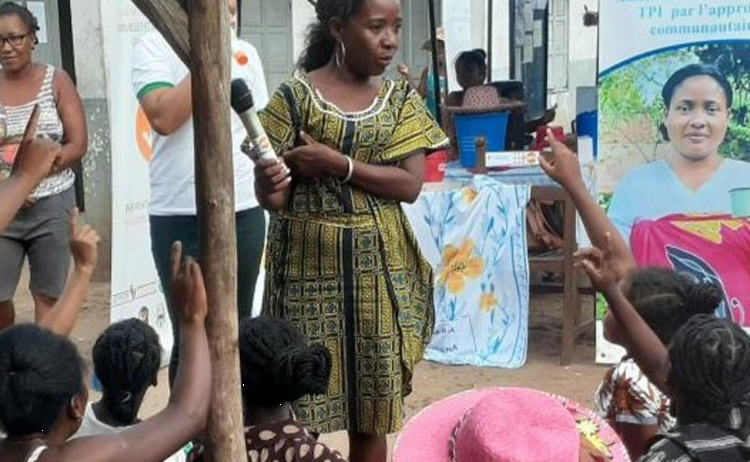Sep 24, 2015
Complications | Health Care Workers
Eva Nangalo: A Midwife’s Journey to Excellence

“I think I was born to be a midwife,” says Sister Eva Nangalo, 37, who works in Nakaseke Hospital in central Uganda. “I feel part of the solution. When women are in labor, you will find them crying in pain. A government hospital like ours attends to women from all backgrounds – some are very poor, but that does not put me off. I come to their rescue. A woman who is in pain needs love. She needs to be comforted and shown that someone cares. That is what I do for them.”
Nangalo’s journey into midwifery was not an easy one. Against the wishes of her father, she entered midwifery school and learned that out of the 103 new entrants, she was the only one who did not have an advanced level of secondary schooling. But what she lacked in qualifications, she made up for in passion and hard work.
“The other students used to leave me alone on the ward and go home or to the disco. I would stay on, even through the night, assisting the midwives, learning as much as I could,” explains Nangalo. “I later started delivering babies on my own. My young age did not scare the mothers. Instead, because I was always available, they trusted me and let me assist them whenever I could.”
Two and a half years later, Nangalo’s hard work paid off. Only 26 of the 103 students completed the course, and Nangalo was second in her class. Since then, she has helped countless mothers deliver babies.
Nangalo takes advantage of every opportunity she has been given to improve and update her job skills. One training that stands out in her mind is Save the Children’s Helping Babies Breathe (HBB) course, which she attended in 2012. HBB is an evidence-based educational program, developed by the American Academy of Pediatrics, which teaches five simple steps that will effectively resuscitate the majority of infants not breathing at birth when performed within the Golden Minute – the first minute after birth.
HBB extends resuscitation skills to providers working in large health facilities down to frontline health workers in impoverished settings, where these skills are most lacking. Save the Children’s HBB program is supported by Johnson & Johnson and provides trainings and support to health care providers in 10 districts throughout Uganda. “I reflected on what I was learning in the HBB training and compared it to the care I provided to babies previously. My first thought was that as midwives we must have unknowingly contributed to the deaths of some babies,” says Nangalo. With sadness, she says she realized during the training that she and her colleagues must have considered some babies to be stillborn right after birth, not realizing those babies could be supported to start breathing.
Eva has used her HBB skills to resuscitate babies considered dead by other health workers who did not know how to intervene. She recalls the situation of a mother who recently came to the hospital after attempting to deliver with the help of a traditional birth attendant. After laboring for three days, her mother-in-law brought her to the hospital where she was rushed for a caesarean section, and delivered premature twins.
“They were blue and motionless,” says Nangalo. “A colleague told me they were dead and that I should take them to the mortuary. I refused to do this because I had heard one of them gasp.” Instead, Nangalo used the skills she learned in her HBB training and successfully resuscitated the babies. “I did my best because I could not just give up before being sure that they would survive,” she explains. “It breaks my heart to see a baby or a mother die. I always imagine that the babies might become someone important in life, or do something really great. So why shouldn’t we give them a chance?”
Eva is a shining example of how the HBB training has helped providers improve the lives of mothers and babies. She proudly reports that the training has helped Nakaseke Hospital reduce the number of referrals it makes and improve the rate of successfully resuscitated babies. Before HBB, many sick babies would be sent to higher-level facilities because the health workers thought they could not provide the services the mothers and babies needed. This is no longer the case. Indeed, inside the labor ward is a chart showing that in the last two months the hospital had 33 babies with asphyxia, all of whom were resuscitated successfully. Since the start of the HBB program in 2012, Save the Children has trained 338 health providers in Uganda who have contributed to successfully resuscitating over 6,000 babies.
“It is my prayer that HBB reaches all midwifery training schools and that all midwives learn the resuscitation skills before graduating. If we all have the correct information and skills, asphyxia will not claim any newborn’s life.”

